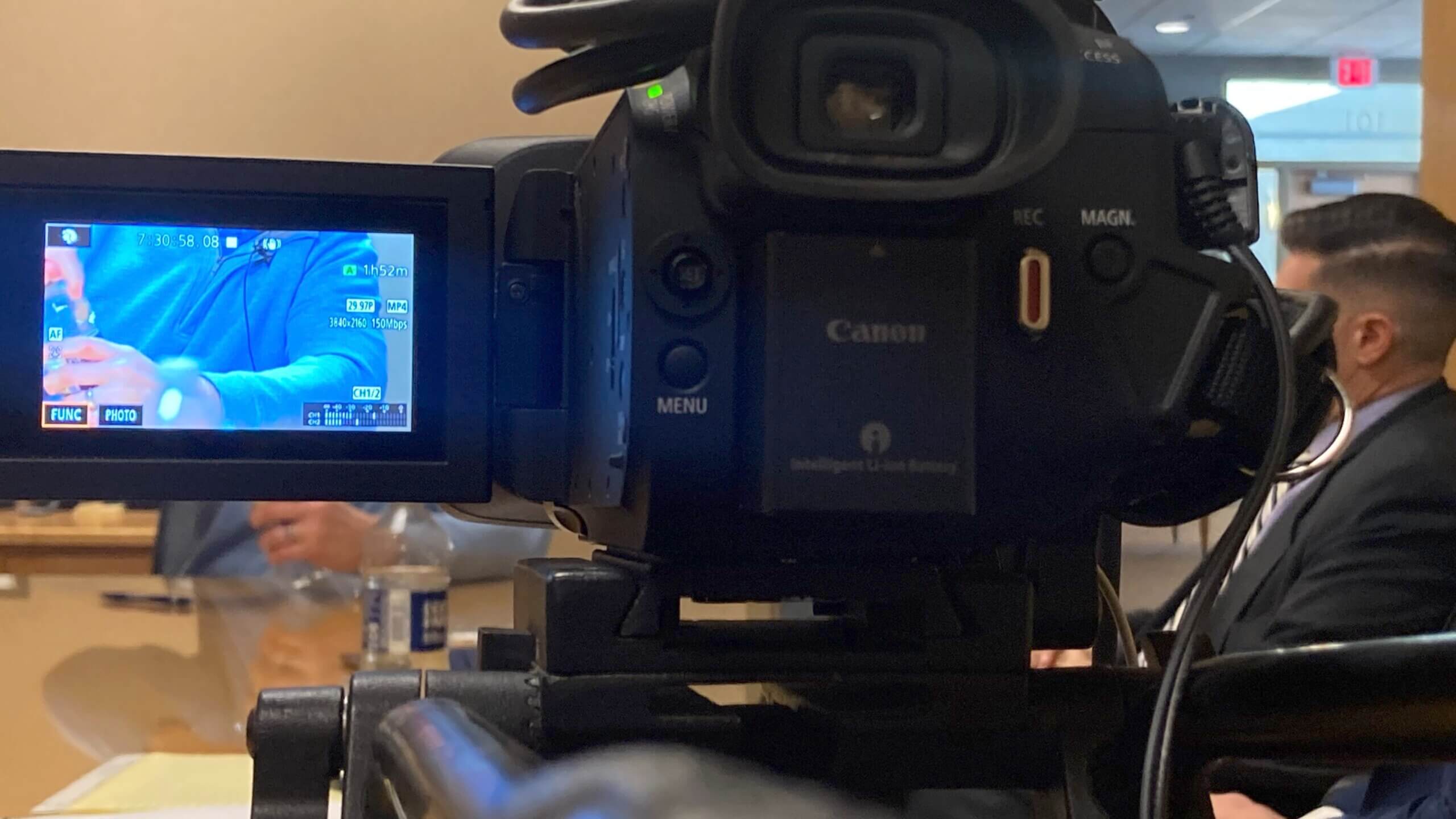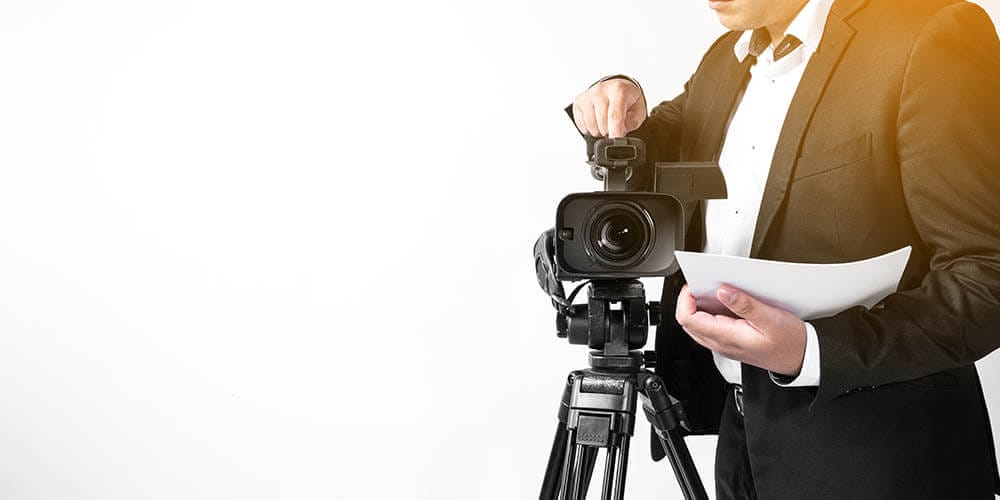Secret Elements to Take Into Consideration When Hiring Legal Videography Professionals
Secret Elements to Take Into Consideration When Hiring Legal Videography Professionals
Blog Article
Exploring the Mechanisms of Lawful Videography: Introduction Its Procedure in Safeguarding Authentic Aesthetic Testament for Judicial Process
In the realm of judicial proceedings, the duty of lawful videography stands as a keystone in preserving and offering aesthetic proof. As technology proceeds to breakthrough, the devices behind lawful videography have actually ended up being progressively elaborate, providing a vital layer of credibility to statements captured on video clip. By delving right into the functional ins and outs of legal videography, one can reveal the meticulous procedures that secure the stability of aesthetic proof provided in courtrooms - Legal Videography. This expedition not only loses light on the historical advancement of lawful videography however also hints at the future trends that might additionally revolutionize exactly how visual testaments are upheld in the realm of justice.
Historical Advancement of Legal Videography
Examining the historical development of lawful videography reveals a considerable transformation in the catching and discussion of visual evidence within the legal landscape. In the past, legal process heavily relied upon created records and photos to record events and provide evidence. With the advent of video innovation, the legal industry experienced a standard change in just how aesthetic testament was caught and provided.
The evolution of legal videography can be traced back to the late 20th century when developments in video recording devices made it more easily accessible for usage in court rooms. This technological improvement not just enhanced the accuracy and dependability of aesthetic proof yet additionally revolutionized the means cases were provided to courts and judges (Legal Videography). Attorneys began to identify the persuasive power of video recordings in conveying feelings, subtleties, and non-verbal cues that composed photos or records alone can not capture efficiently

Technology Advancements in Video Clip Paperwork
What crucial technical improvements have reinvented video clip documents in the lawful field? The legal area has actually seen considerable improvements in video paperwork modern technology that have actually improved the authenticity and reliability of visual proof in judicial process. Among the crucial developments is high-definition (HD) video recording capacities, which give crystal-clear pictures and sharp details that are vital for precisely capturing testaments, faces, and other visual signs. In addition, the combination of timestamping and metadata attributes in video clip paperwork tools has actually allowed accurate documentation of when and where the video clip was taped, guaranteeing the stability of the evidence offered in court.
Moreover, innovations in video file encryption and watermarking technologies have boosted the safety and tamper-proof nature of video clip evidence, guarding it versus unapproved alterations or meddling. The development of cloud storage space solutions and remote gain access to abilities has streamlined the storage space, access, and sharing of video evidence, helping with smooth collaboration among legal experts and guaranteeing effective access to important aesthetic testaments when needed. These technical innovations in video clip documents have actually unquestionably changed the lawful area, improving the precision, trustworthiness, and admissibility of aesthetic evidence in judicial procedures.
Role of Legal Videographers in Court Settings
The development of video paperwork modern technology in the lawful field has actually required a crucial duty for lawful videographers in courtroom setups, making certain the honesty and dependability of visual statements presented throughout judicial procedures. Legal videographers play a fundamental role in recording and protecting accurate visual evidence that can be pivotal in lawsuit. Their obligation reaches setting up devices, tape-recording proceedings, and generating premium video clips that precisely reflect the click here for more occasions in the courtroom.
In court room setups, lawful videographers have to adhere to rigorous standards and standards to keep the authenticity of the aesthetic document. They should have a i was reading this keen eye for information and an extensive understanding of legal treatments to guarantee that the video they capture is a real depiction of the occasions that transpired. Furthermore, legal videographers commonly work very closely with legal teams to make certain that the video evidence lines up with the case's needs and can be effectively provided in court to sustain the legal arguments being made. Generally, the duty of legal videographers in court setups is important in upholding the principles of justice and making sure the transparency of lawful proceedings.

Ensuring Admissibility and Stability of Video Clip Evidence
To preserve the credibility of visual evidence offered in legal procedures, making certain the admissibility and integrity of video evidence is a vital duty for lawful videographers. Admissibility refers to the acceptance of proof by the court, and for video evidence to be acceptable, it has to meet particular criteria. Legal videographers play an important duty in ensuring that the video clips they capture abide by the policies of evidence, such as credibility, relevance, and dependability.
Stability of video clip evidence includes maintaining the originality and accuracy of the footage from the time it is recorded until it exists in court. This includes safely storing the video files, documenting the chain of wardship, and preventing any kind of meddling or changes. Lawful videographers have to stick to rigorous procedures to ensure the stability of the video clip proof and stop any type of challenges to its credibility.
Future Trends in Legal Videography
Offered the raising dependence on innovation in legal procedures, legal videographers are poised to welcome cutting-edge innovations shaping the future of aesthetic testament home capture and presentation. One of the noticeable trends coming up is the assimilation of online reality (VIRTUAL REALITY) and augmented reality (AR) modern technologies right into legal videography. These modern technologies have the prospective to change just how visual proof is provided in courtrooms, allowing discretionary to submerse themselves in the scene of the crime or event.
In addition, making use of fabricated intelligence (AI) algorithms for video clip analysis is anticipated to improve the procedure of reviewing and evaluating large quantities of video footage. AI can help in recognizing key minutes, anomalies, and patterns within videos, enhancing the performance of legal investigations.

Final Thought
In final thought, legal videography has actually played an important role in supplying authentic visual proof for judicial procedures. Via technical innovations and the proficiency of lawful videographers, the integrity and admissibility of video evidence are made sure in courtroom setups. As lawful videography remains to evolve, it will certainly be important to promote requirements that keep the accuracy and integrity of visual statement for the future of lawful proceedings.
Taking a look at the historical progression of lawful videography discloses a considerable makeover in the recording and presentation of aesthetic proof within the legal landscape.The development of video clip documentation technology in the legal field has demanded an important duty for lawful videographers in courtroom settings, ensuring the stability and integrity of visual testimonies provided throughout judicial proceedings. Additionally, legal videographers commonly function carefully with lawful teams to make sure that the video clip proof lines up with the situation's demands and can be successfully offered in court to sustain the lawful debates being made.To maintain the integrity of aesthetic proof provided in legal procedures, making sure the admissibility and stability of video evidence is a vital responsibility for legal videographers. As legal videography proceeds to evolve, it will certainly be crucial to maintain requirements that preserve the accuracy and reliability of aesthetic statement for the future of legal procedures.
Report this page